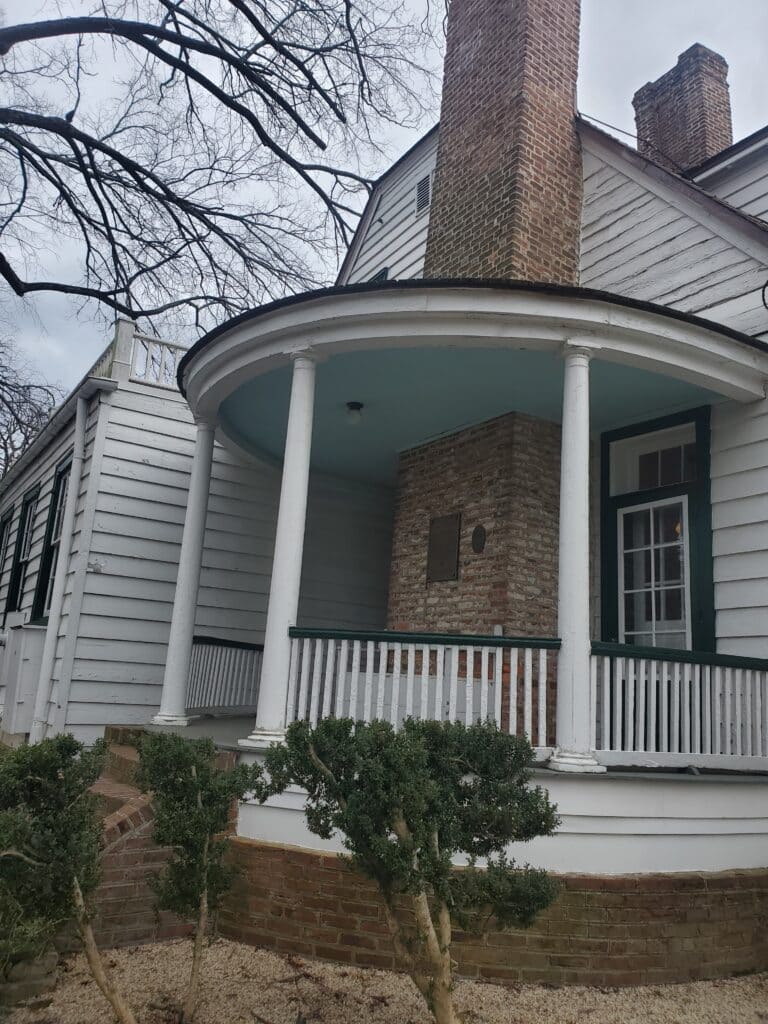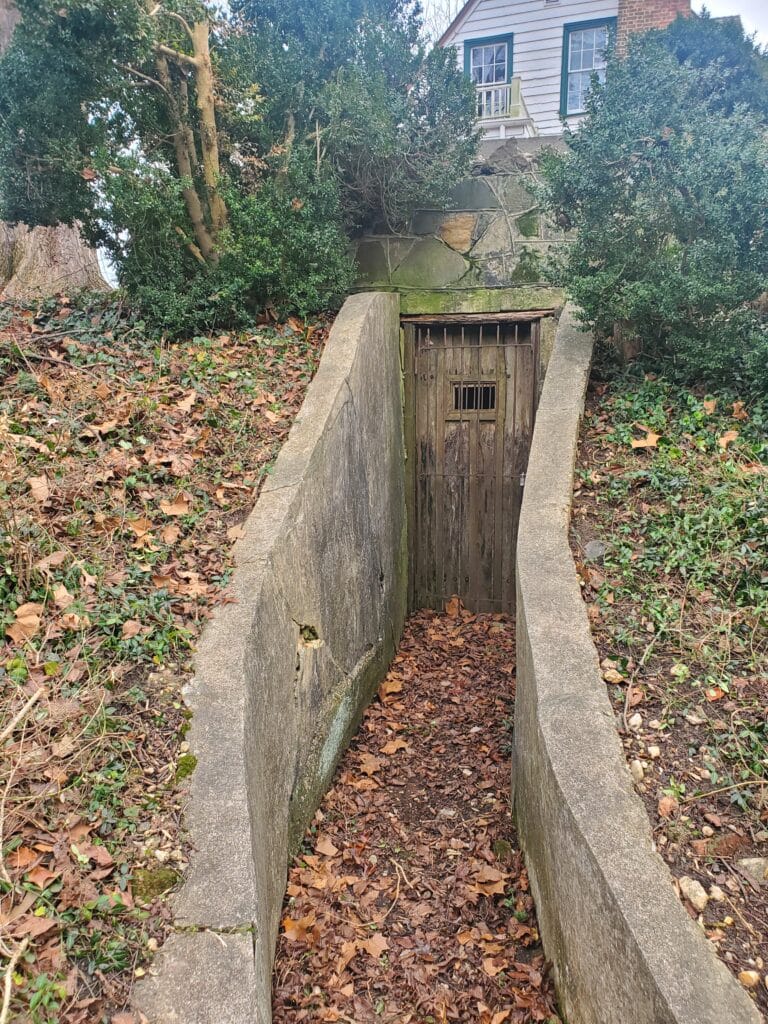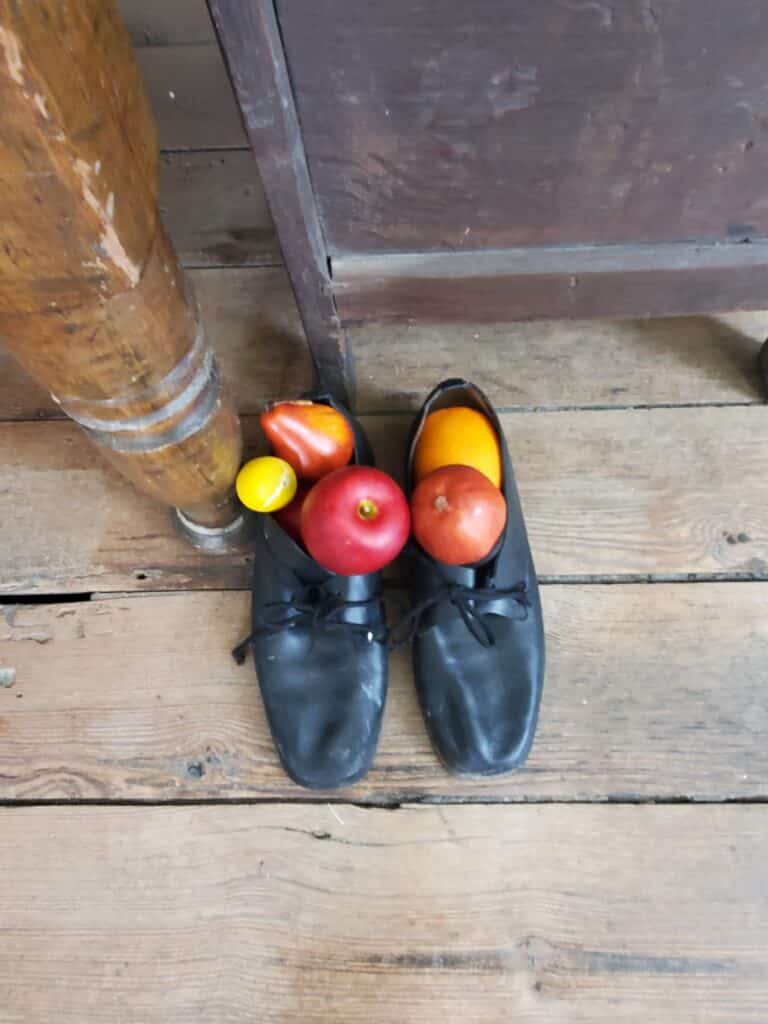Haint Blue at Rippon Lodge

Rippon Lodge is believed to be one of the oldest homes in Prince William County, built around 1747 by Richard Blackburn and owned by subsequent generations of his family. This plantation house is modest in size, but the original plantation was well over 2000 acres near the Neabsco Creek, an offshoot of the Potomac River. My visit there during the holidays mostly raised questions about the many legends attached to the home. And while I need answers, the truth seems negotiable.
The side porch ceiling was painted blue. Haint Blue was a color used to paint the ceilings of many plantation home porches in the South. Originating in the Gullah culture in Georgia and South Carolina, this color of blue, a derivative of the indigo plant, was believed to scare away spirits who might believe the ceiling to be the sky and fly upwards and away from a home’s occupants. Modern homeowners believe haint blue porch ceilings ward off insects.
While a quaint superstition, it h-ain’t true.

Like many legends, truth is less important in these simple answers to perplexing questions. Depending upon the form (legend, myth, fiction), truth becomes shades of something else, less concerned with accuracy and more intent on entertaining or teaching or reinforcing societal values (good and bad).
Take for example the tunnel with the Stephen King-like door off to the side of this home. What was the purpose? Was it just an eerie entrance to a cellar or something more ominous? The legend tries to explain it as a hiding place for the residents to conceal themselves from local indigenous people intent on doing them harm. Sometimes legends not only attempt to explain the unknown but also mask unjustified fear.

As I walked through this house, the plank floors strained from the weight of history (or me), squeaking with each step. I was impressed by the restoration efforts that left bare walls or carveouts to allow the modern visitor a peak into past construction methods. Yet, other explanations of various features perpetuated myths, like the kelly green paint of the chair railing is said to have indicated the wealth of the family to visitors. (An odd status symbol, but okay.) And then there is the whopper of all legends: Saint Nick leaving fruit in unattended shoes by the bed on Christmas Eve (as if anyone would like to eat fruit left in shoes! Eww!)

Legends help us understand how people from the past coped with the unknown or unexplainable. Without the benefit of science, legends could explain everything from disease to weather to life itself. As a fiction writer, I should welcome interesting legends as explanations for historical oddities, fears or societal realities. But I struggle with the appropriate place of truth in history. Is truth knowable, or is it malleable to beliefs that change and revelations that come later?
Putting legend aside, the preservation efforts to record the presence of the slaves who built and worked this plantation home were plentiful. In 1782, thirty-seven slaves were named in unearthed records as (first names only):
Peter, Casar, Cha, Cato, Pompey, Rogers, Cook, Juba, Moll, Rose, Hannah, Sall, Moll, Easter, Judy, Bett, Grace, Lucy, Kithlehen, Arabella, Lucy, Jacob, Moses, George, Peter, Will, Winny, Lucy, Joe, Price, Nell, Tom, Amandy, Gloser, Suck, and Cesar.
I’m encouraged by the attention paid in restoration efforts of historical homes to include information on the role of the slave population’s labor in the establishment and maintenance of these homes. It can be a painful truth but one that serves us well in understanding the complete truth.
I love history because of what it teaches us about ourselves, our society, and human nature. As a writer of fiction, I understand that stories (true or not) can lead us to universal truths. But as we live through what has been coined the “post-truth” era, I find myself asking more often: “what is true?” And how does truth change (for good or bad) over time? And should it?
But really, it h’aint gotta be that difficult, right?


